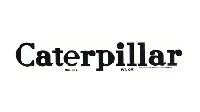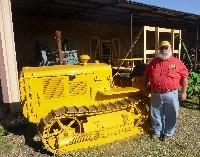- Posts: 362
- Thank you received: 33

ACMOC Membership Benefits
- FREE quarterly magazine filled with content about antique Caterpillar machines
- FREE classified listings
- ACMOC store discounts and specials
- Full Bulletin Board Access
- Marketplace (For Sale/Wanted)
- Technical Library
- Post attachments
$44 /year ELECTRONIC
$60 /year USA
$77 /year International
Photo's from a Bygone Era
Please Log in or Create an account to join the conversation.
- Cat Twenty Five
-

- Offline
- Premium Boarder
- User
- Posts: 127
- Thank you received: 517
Attachments:
Please Log in or Create an account to join the conversation.
- Cat Twenty Five
-

- Offline
- Premium Boarder
- User
- Posts: 127
- Thank you received: 517
Attachments:
Please Log in or Create an account to join the conversation.
The lindeman transplanter was just two wheels with two rubber wheels in between to grip the plants, the plants were bare root at this time. Apparently plant spacing was accomplished by laying out cross marks with previous toolbar operation with marker arms and probably just a cultivator standard at the right spacing. This operation was done at a 90 degree to the direction the rows were running. The transplanter operator would then use the cross mark as a guide as to when to put the transplant into the planter.
This all changed sometime in the late 60’s when they went to direct seed planting. By then they would custom hire one of the many local fertilizer companies that had a fleets of D5 or D6’s with tool bars and would list / bed / furrow out the rows and apply the starter and sometimes the fumigant. When they went to direct seed typically they would have a repeating pattern of a wide bed followed by a narrow bed. By then there were wheel tractors with enough horsepower to run what they called an incorporator that was a sled mounted heavy duty rototiller on steroids that would till just the wider bed. Following this a planet Jr would plant two lines of seed just on the wider bed.
After this a Cat D6 or D5 or a HD11 for the orange folks in the crowd would put in an irrigation ditch at the high end of the rows and use the same crawler and a pull grader to put in a drain ditch at the bottom end. Drainage and water management was crucial at this stage trying to germinate but not kill the seed. After the crop emerged the same crawler was used to first dry out the irrigation ditch then the pull grader was used to close up the ditch and drain.
At this point a number of cultivation and thinning operations would occur with wheel tractors before another Cat tool bar on a D5 or D6 sized tractor would middle bust out that narrow bed and leave a single wide bed. This was another crucial operation where the better the better the caterpillar driver was the closer the following cultivation operations would be. Following the caterpillar middle busting operation another large wheel tractor with an even larger incorporator would rototill basically everything but a 4” band where the plants were and reform a perfectly flat and level bed for mechanical harvesting. The Cat D6, HD 11 sized tractor at this point would put irrigation ditches and drainage ditches back in and they would last until right before harvest. The crawlers would once again dry out the ditches, then use a two man grader to close and level out the ends of the rows. Harvest at this time would require 2 D5 or D6 crawlers per mechanical harvester to pull the semi trailers through the field.
Then in the mid 90’s as seed costs went into 4 digits per acre and thinning costs were probably just as high. At this time everything went back to transplants where automation at the greenhouse level was able to handle the higher cost seed more efficiently with single seed singlation putting usually a single seed per plug and the transplanters had a much better system to control plant spacing. Much of the caterpillar work was obsolete by this time as well and really came to an end by the mid 2000’s with both drip and RTK GPS dealing the final blow to this need.
By then the Lindeman had been sent to scrap despite being the perfect solution for skip replanting.
Little long winded, but that’s how caterpillars were used in this part of the world.
Please Log in or Create an account to join the conversation.
- Cat Twenty Five
-

- Offline
- Premium Boarder
- User
- Posts: 127
- Thank you received: 517
Attachments:
Please Log in or Create an account to join the conversation.
- Cat Twenty Five
-

- Offline
- Premium Boarder
- User
- Posts: 127
- Thank you received: 517
Attachments:
Please Log in or Create an account to join the conversation.
- Cat Twenty Five
-

- Offline
- Premium Boarder
- User
- Posts: 127
- Thank you received: 517
Attachments:
Please Log in or Create an account to join the conversation.
- Cat Twenty Five
-

- Offline
- Premium Boarder
- User
- Posts: 127
- Thank you received: 517
Attachments:
Please Log in or Create an account to join the conversation.
- Cat Twenty Five
-

- Offline
- Premium Boarder
- User
- Posts: 127
- Thank you received: 517
Attachments:
Please Log in or Create an account to join the conversation.
Please Log in or Create an account to join the conversation.
ACMOC
Antique Caterpillar Machinery Owners Club
1115 Madison St NE # 1117
Salem, OR 97301
cat@acmoc.org
"I became a member recently because the wealth of knowledge here is priceless."
- Chris R
"I also joined a year ago. had been on here a couple of times as a non-member and found the info very helpful so I got a one year subscription (not very expensive at all) to try it out. I really like all the resources on here so I just got a three year. I think its a very small price for what you can get out of this site."
- Jason N


